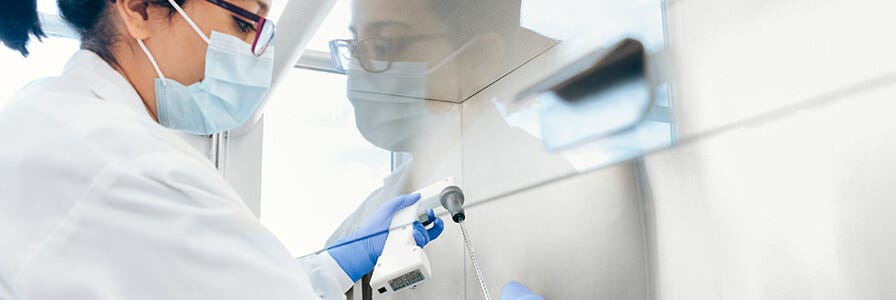Five Simple Tips for Working from Home More Productively

If you’re used to working at the office or the lab, working from home can take some time to get used to. To be productive, you may need to establish a new routine and workspace. Follow these five simple tips to make working from home as enjoyable and successful as possible.
1. Establish a Start-Up Routine
By working from home, you no longer have the commute time that used to help to separate your home and work life. You may be finding this lack of transition and distance between the two environments challenging. Establish a start-up routine every morning to help switch your mind into work mode. This could be as simple as getting dressed and eating breakfast, a morning walk around the neighborhood, or sitting down for daily goal setting.
2. Give Your Workspace Some Ambience
The occasional chats with your coworkers or simply working together with them in the same environment may have been energizing to you at the office or the lab. If your home feels a little too quiet, listen to background music or leave the radio on while you work. You could also schedule times to virtually connect with your coworkers over coffee breaks or at the end of the work day.
3. Optimize Your Workspace
Creating a well-planned and organized workspace can go a long way to boosting productivity. You can optimize your home workspace for efficiency using the same principles as organizing a lab bench.
Choose The Right Chair
- The chair you use should be stable with a backrest. Try using a small cushion or rolled-up towel behind your lower back for additional lumbar support.
- Consider using a raised footrest (e.g. a stool, a box) to support your feet. Make sure your footrest does not raise your knees higher than your hips.
Use Your Keyboard & Mouse Effectively
- Make sure the work surface you choose allows for a neutral posture and is not too high.
- Use an external keyboard and mouse, and place them at the same height.
- Your elbows should be at the same height as the keyboard surface, with your elbows at your side and not reaching forward.
- Position the keyboard and mouse just above your thighs so you can keep your shoulders relaxed and wrists straight.
Adjust Your Monitor To Reduce Glare
- Ideally, the monitor should be an arm’s length away and the top line of text should be at eye level.
- Reduce possible sources of glare, such as windows, overhead lights, or any shiny surfaces.
- Ensure windows are at your side and not in front of or behind your monitors.
- Adjust brightness and contrast on the monitor so that it is similar to your surroundings.
Organize your work materials
- High-use items should be reachable with your elbows at your side and not reaching forward.
- Occasionally used items (e.g. phone and pens) should be reachable with your arm extended, while keeping your back on the backrest.
4. Adjust Your Posture and Stretch
Just like at the office or the lab, it’s important to maintain good posture while you are sitting down:
- Sit with your buttocks back against the backrest. Your back should be nearly upright.
- When sitting in your chair, your elbows should be bent about 90 degrees or slightly greater, with your forearms held horizontally and elbows just clear of the top of the work surface (e.g. desk).
- Sit with your knees and hips at the same height to avoid pressure on the back of your thighs.
Avoid awkward postures and staying in one place for too long. If possible, alternate tasks to change your posture and use different muscle groups. Try to break up your work into smaller chunks.
Take stretch breaks by following the 20/20/20 guideline: Take a 20-second stretch break every 20 minutes, and look about 20 feet away.
5. Establish an End-of-Day Routine
Just like a start-up routine, having an “end-of-the-workday” routine can be helpful to keep your work and home life separated, and ultimately to avoid burnout. A specific routine will help you transition away from work mode so you can stop thinking about your tasks or resist the temptation to check your work email. An end-of-day routine can be as simple as changing your clothes, going for a walk, or doing some exercise.
While you’re working from home, take the opportunity to re-evaluate your experimental procedures and techniques for when you get back to the lab. You may notice inefficiencies or areas for improvements in your past practices. Perhaps it’s time to explore new tools and technologies to make your work more efficient, reproducible, and relevant.
Related Resources
Moving Science Forward
Explore tools and resources to help you return to the lab with greater efficiency, reproducibility, and relevance.
Digital and Remote Resources for Your Lab
Explore virtual support and resources to stay productive and connected with your field.




